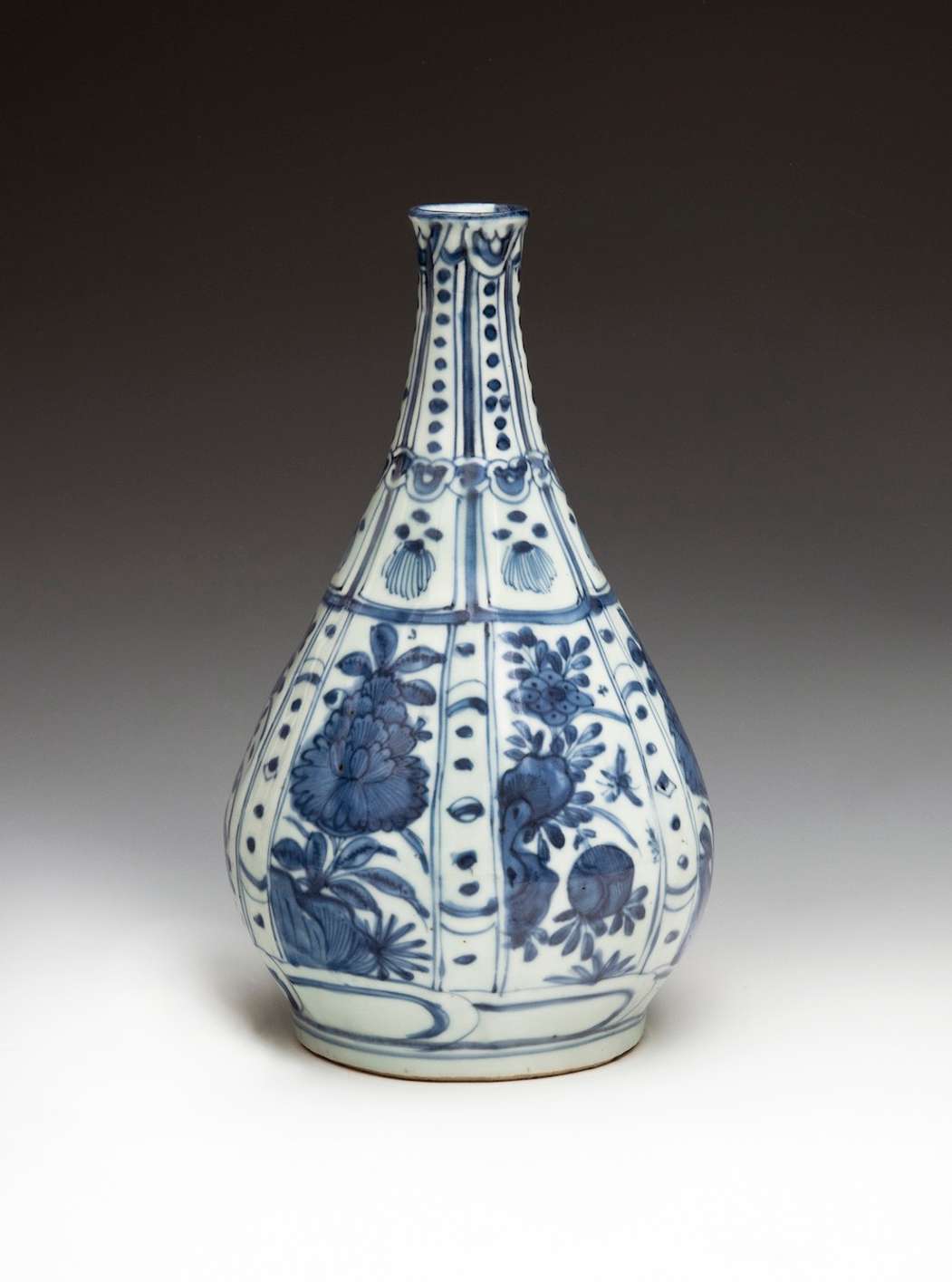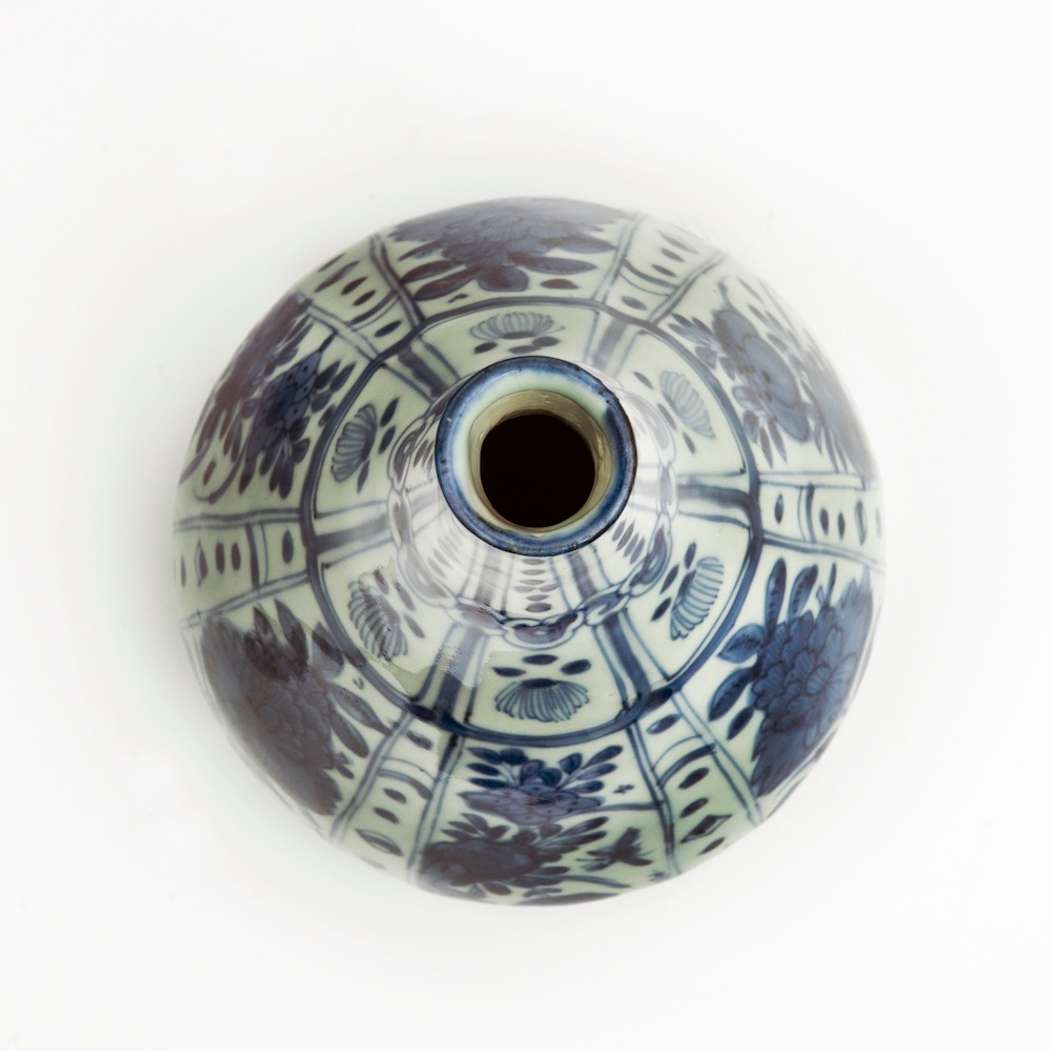Click the above image to zoom
Chinese porcelain bottle decorated in underglaze cobalt blue (qinghua) in the kraak pattern, Wanli
Sold
Stock Number: 5342
Chinese porcelain bottle moulded and decorated in brilliant underglaze cobalt blue (qinghua) in the typical kraak pattern with vegetation, c. 1600, Wanli reign, Ming dynasty, h. 26 cm, 10¼ in; d. 3,5/9/17/11 cm, 7 in. 1-23523
Provenance: Dom Alexandre de Sousa e Holstein Beck, the late Viscount of Lançada, Portugal (1934-2014); thence by descent to the present owner, sold in London in 2023.
Bibliography:
• Chinese Blue and White Ceramics, by S.T. Yeo and J. Martin, Singapore 1978, p. 210/11, plate 124 for a similar piece of the same size;
• Kraak Porcelain, edited by L. Vinhais & J. Welsh, p. 148-153, cat. 18/18, for a bottle of the same form dated 1613/15;
• Jingdezhen to the World, by T. Canepa, p. 150/51, cat. 47, for a bottle 19,7 cm high, dated 1590/95;
• Kraak Porcelain, by M. Rinaldi, London 1989, pp. 166/174, where the author discusses closed forms amongst them similar pear shaped bottles dated 1575-1650.
◆ Viscount of Lançada is a noble title created by D. Maria II of Portugal, by Decree of January 10, 1849, in favour of Manuel Inácio de Sampaio and Pina Freire.
Title holders:
1. Manuel Inácio de Sampaio e Pina Freire, 1st Viscount of Lançada;
2. Inácio Júlio de Sampaio e Pina Freire, 2nd Viscount of Lançada.
Lineage: of Sampaio and Pina Freire; of Sousa and Holstein Beck
After the establishment of the Portuguese Republic, and with the end of the nobility system, they used the title:
1. D. Domingos de Sousa and Holstein Beck, 3rd Viscount of Lançada, 5th Duke of Palmela, 4th Count of Calhariz, 3rd Count of Póvoa;
2. D. Alexandre de Sousa and Holstein Beck, 4th Viscount of Lançada;
3. D. Alexandre Lobo Guedes de Sousa e Holstein, 5th Viscount of Lançada (current holder).
The palace: built in the XVIII century, property of Manuel de Sampaio de Pina e Brederode, grandfather of the 1st Viscount of Lançada, was during the following century the chosen space for the first get-togethers of romantic Lisbon, where we find names like Almeida Garrett, Júlio de Castilho, Fontes Pereira de Melo , between others. In 1881, the newspaper "O Século" settles in the palace, which, at the end of the 19th and early 20th centuries is the subject of adaptation works, translated into changes and additions, essentially related to the printing press activity. The annex building, (nº 61-63), was added in 1913.
Classified as a Property of Public Interest, the relevance of these properties is closely linked to the history of the press in Portugal, in addition to being an interesting example of iron architecture and the eclecticism of the late 19th and the first half of the 20th century. XX, preserving, however, some characteristics of the 18th century palatial architecture, evident in the central body of the palace, in its main entrance, in the interior marble staircase and in the beautiful tiles that decorate some rooms.





